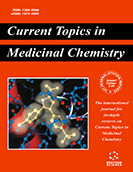Abstract
Nanoparticles are likely to interact in real-case application scenarios with mixtures of proteins and biomolecules that will absorb onto their surface forming the so-called protein corona. Information related to the composition of the protein corona and net cell association was collected from literature for a library of surface-modified gold and silver nanoparticles. For each protein in the corona, sequence information was extracted and used to calculate physicochemical properties and statistical descriptors. Data cleaning and preprocessing techniques including statistical analysis and feature selection methods were applied to remove highly correlated, redundant and non-significant features. A weighting technique was applied to construct specific signatures that represent the corona composition for each nanoparticle. Using this basic set of protein descriptors, a new Protein Corona Structure-Activity Relationship (PCSAR) that relates net cell association with the physicochemical descriptors of the proteins that form the corona was developed and validated. The features that resulted from the feature selection were in line with already published literature, and the computational model constructed on these features had a good accuracy (R2LOO=0.76 and R2LMO(25%)=0.72) and stability, with the advantage that the fingerprints based on physicochemical descriptors were independent of the specific proteins that form the corona.
Keywords: Cell association, Fingerprint, Multilinear regression, Nanoparticles, Physicochemical properties, Protein corona, Surface modification.
Graphical Abstract
Current Topics in Medicinal Chemistry
Title:Predicting Cell Association of Surface-Modified Nanoparticles Using Protein Corona Structure - Activity Relationships (PCSAR)
Volume: 15 Issue: 18
Author(s): Padmaja Kamath, Alberto Fernandez, Francesc Giralt and Robert Rallo
Affiliation:
Keywords: Cell association, Fingerprint, Multilinear regression, Nanoparticles, Physicochemical properties, Protein corona, Surface modification.
Abstract: Nanoparticles are likely to interact in real-case application scenarios with mixtures of proteins and biomolecules that will absorb onto their surface forming the so-called protein corona. Information related to the composition of the protein corona and net cell association was collected from literature for a library of surface-modified gold and silver nanoparticles. For each protein in the corona, sequence information was extracted and used to calculate physicochemical properties and statistical descriptors. Data cleaning and preprocessing techniques including statistical analysis and feature selection methods were applied to remove highly correlated, redundant and non-significant features. A weighting technique was applied to construct specific signatures that represent the corona composition for each nanoparticle. Using this basic set of protein descriptors, a new Protein Corona Structure-Activity Relationship (PCSAR) that relates net cell association with the physicochemical descriptors of the proteins that form the corona was developed and validated. The features that resulted from the feature selection were in line with already published literature, and the computational model constructed on these features had a good accuracy (R2LOO=0.76 and R2LMO(25%)=0.72) and stability, with the advantage that the fingerprints based on physicochemical descriptors were independent of the specific proteins that form the corona.
Export Options
About this article
Cite this article as:
Kamath Padmaja, Fernandez Alberto, Giralt Francesc and Rallo Robert, Predicting Cell Association of Surface-Modified Nanoparticles Using Protein Corona Structure - Activity Relationships (PCSAR), Current Topics in Medicinal Chemistry 2015; 15 (18) . https://dx.doi.org/10.2174/1568026615666150506152808
| DOI https://dx.doi.org/10.2174/1568026615666150506152808 |
Print ISSN 1568-0266 |
| Publisher Name Bentham Science Publisher |
Online ISSN 1873-4294 |
 41
41 4
4
- Author Guidelines
- Bentham Author Support Services (BASS)
- Graphical Abstracts
- Fabricating and Stating False Information
- Research Misconduct
- Post Publication Discussions and Corrections
- Publishing Ethics and Rectitude
- Increase Visibility of Your Article
- Archiving Policies
- Peer Review Workflow
- Order Your Article Before Print
- Promote Your Article
- Manuscript Transfer Facility
- Editorial Policies
- Allegations from Whistleblowers
- Announcements
Related Articles
-
Current Opinion in the Pharmaceutical Management of Irritable and Inflammatory Bowel Diseases: Role of ATP
Recent Patents on Endocrine, Metabolic & Immune Drug Discovery (Discontinued) MicroRNA-16-5p Controls Development of Osteoarthritis by Targeting SMAD3 in Chondrocytes
Current Pharmaceutical Design Therapeutic Use of Snake Venom Components: A Voyage from Ancient to Modern India
Mini-Reviews in Organic Chemistry A comprehensive review on the efficacy of S-Adenosyl-L-methionine in Major Depressive Disorder.
CNS & Neurological Disorders - Drug Targets New Look at Therapeutic Strategies for Blocking Costimulatory Signal in Experimental and Pre-Clinical Transplantation
Current Drug Safety In Silico Studies in Drug Research Against Neurodegenerative Diseases
Current Neuropharmacology Intraocular Immune Mechanisms in Uveitis
Current Immunology Reviews (Discontinued) Pathology and Development - Developmental Systems for Target Validation and Drug Screening in Osteoarthritis
Drug Design Reviews - Online (Discontinued) Formulation and Assessment of In Vivo Anti-Inflammatory Potential of Omega-3-Fatty Acid Loaded Self Emulsifying Nanoemulsion
Current Nanomedicine The Development of Pro-Apoptotic Cancer Therapeutics
Mini-Reviews in Medicinal Chemistry Targeting Cytosolic Phospholipase A2α for Novel Anti-Inflammatory Agents
Current Medicinal Chemistry Immune Cell-derived Vesicles: Modulators and Mediators of Inflammation
Current Pharmaceutical Design From Adipose Tissue Protein Secretion to Adipopharmacology of Disease
Immunology, Endocrine & Metabolic Agents in Medicinal Chemistry (Discontinued) Evaluation of Anti-inflammatory Effects of Choerospondias axillaris Fruit’s Methanolic Extract in Synoviocytes and CIA Rat Model
Current Pharmaceutical Biotechnology Mitogen Activated Protein (MAP) Kinases: Development of ATP and Non- ATP Dependent Inhibitors
Medicinal Chemistry Low Level Laser Therapy [LLLT] in Inflammatory and Rheumatic Diseases:A Review of Therapeutic Mechanisms
Current Rheumatology Reviews Improving the Utility of Steroidal Anti-Inflammatories: Identification of Selective Glucocorticoid Receptor Modulators
Current Medicinal Chemistry - Immunology, Endocrine & Metabolic Agents Progress in the Rational Design for Polypharmacology Drug
Current Pharmaceutical Design Modulatory Effects of Peroxisome Proliferator-Activated Receptor-γ on CXCR3 Chemokines
Recent Patents on Inflammation & Allergy Drug Discovery 31P NMR Spectroscopy of Phospholipids: From Micelles to Membranes
Current Analytical Chemistry


























